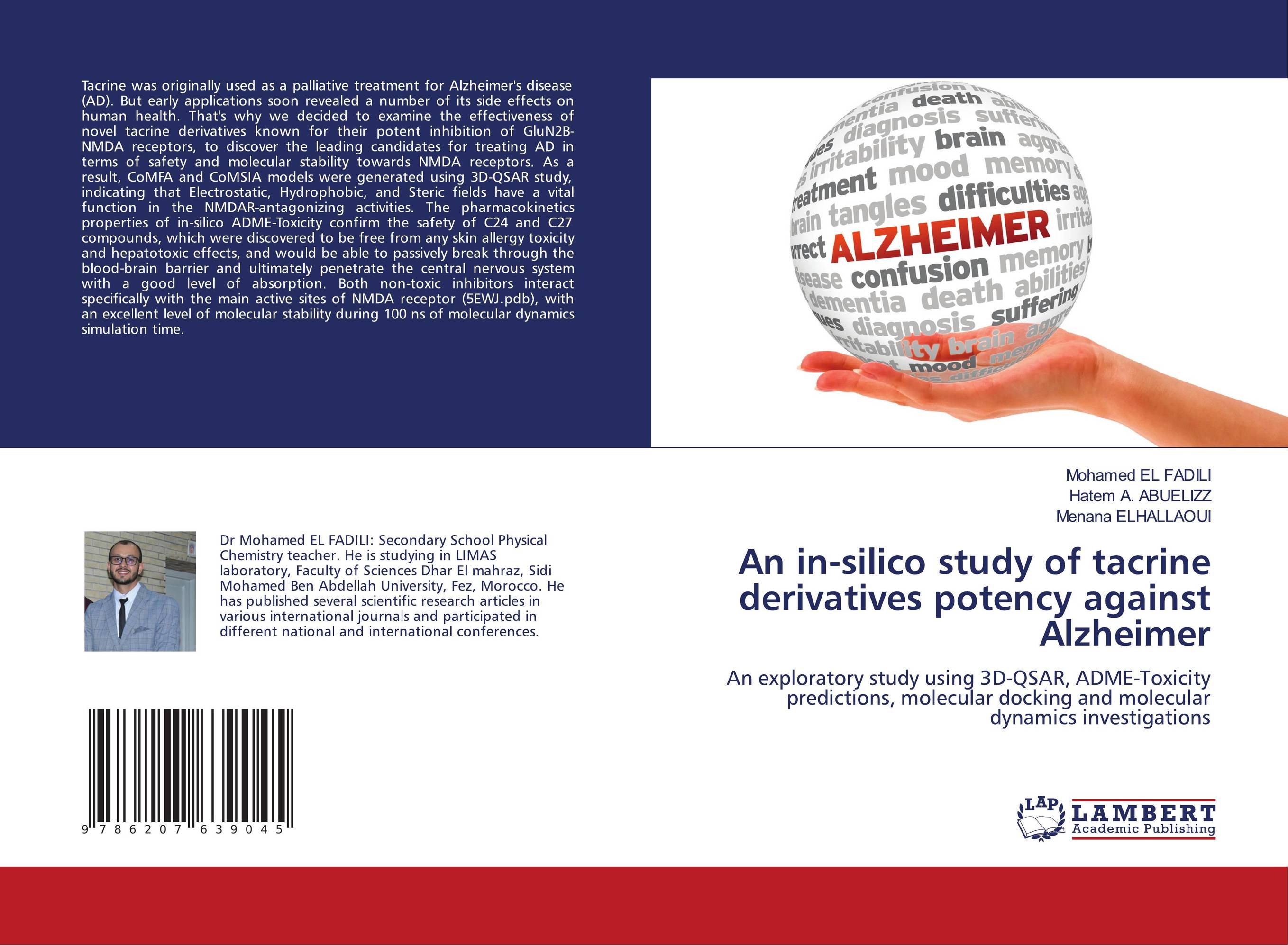| Поиск по каталогу |
|
(строгое соответствие)
|
- Профессиональная
- Научно-популярная
- Художественная
- Публицистика
- Детская
- Искусство
- Хобби, семья, дом
- Спорт
- Путеводители
- Блокноты, тетради, открытки
An in-silico study of tacrine derivatives potency against Alzheimer. An exploratory study using 3D-QSAR, ADME-Toxicity predictions, molecular docking and molecular dynamics investigations

В наличии
| Местонахождение: Алматы | Состояние экземпляра: новый |

Бумажная
версия
версия
Автор: Mohamed EL FADILI,Hatem A. ABUELIZZ and Menana ELHALLAOUI
ISBN: 9786207639045
Год издания: 2024
Формат книги: 60×90/16 (145×215 мм)
Количество страниц: 56
Издательство: LAP LAMBERT Academic Publishing
Цена: 19555 тг
Положить в корзину
Ожидает определения тематики
Код товара: 901054
| Способы доставки в город Алматы * комплектация (срок до отгрузки) не более 2 рабочих дней |
| Самовывоз из города Алматы (пункты самовывоза партнёра CDEK) |
| Курьерская доставка CDEK из города Москва |
| Доставка Почтой России из города Москва |
Аннотация: Tacrine was originally used as a palliative treatment for Alzheimer's disease (AD). But early applications soon revealed a number of its side effects on human health. That's why we decided to examine the effectiveness of novel tacrine derivatives known for their potent inhibition of GluN2B-NMDA receptors, to discover the leading candidates for treating AD in terms of safety and molecular stability towards NMDA receptors. As a result, CoMFA and CoMSIA models were generated using 3D-QSAR study, indicating that Electrostatic, Hydrophobic, and Steric fields have a vital function in the NMDAR-antagonizing activities. The pharmacokinetics properties of in-silico ADME-Toxicity confirm the safety of C24 and C27 compounds, which were discovered to be free from any skin allergy toxicity and hepatotoxic effects, and would be able to passively break through the blood-brain barrier and ultimately penetrate the central nervous system with a good level of absorption. Both non-toxic inhibitors interact specifically with the main active sites of NMDA receptor (5EWJ.pdb), with an excellent level of molecular stability during 100 ns of molecular dynamics simulation time.
Ключевые слова: NMDA receptor, Alzheimer's disease, 3D-QSAR, ADME-Toxicity, Molecular Docking, molecular dynamics



